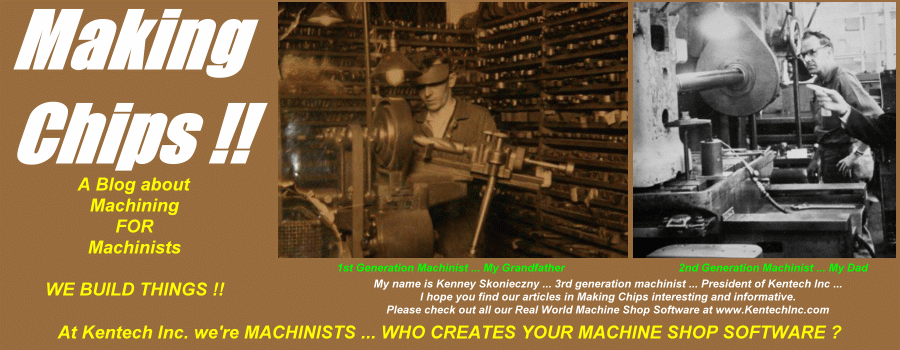So far in our series we have looked at machining multiple parts of all the same part mounted in our fixtures during our machining cycle. What if we want to machine different parts during the cycle ... we want to mount different fixtures on the table and machine one of each during the machining cycle.
First let's look at some reasons WHY we might want to do this.
- Perhaps we will be delivering an assembly made of multiple parts we need to machine. If we machine all the components at the same time ... during the machining cycle ... we can better accomplish scheduling and production of the entire assembly.
- Perhaps similar parts utilize similar cutting tools ... if we can machine them at the same time we can reduce and better control our tooling requirements both from a "tool in the machine" as well as from an inventory viewpoint.
- We need to break into a production run for some "special circumstance" ... rather than halt the production all-together, we can sneak another fixture on the table and machine both parts during the same cycle.
- Having lived in the real world ... we could go on and on and on ... you know !!
Looking back at Part #1 and Part #2 in our series ... any of these scenarios certainly becomes a fairly simple task.
Fixture Offsets from Part #1
As we mount the different fixtures on the table ... we can establish a Work Offset for each fixture. Now each fixture is independent of the others ... and can be called with a simple G54-G59 call.
Sub-Programming from Part #2
We could use a variety of sub-programming options to accomplish the various scenarios. The easiest is to simply have a complete machining program for each fixture ... and call it using the sub-program call in our main program. So we would utilize a main program to actually link all our different machining programs together. Something line this :
Main Program :
O0001
G54
M98 P1234 ( program to machine fixture #1 completely )
G55
M98 P5678 ( program to machine fixture #2 completely )
G56
M98 P8888 ( program to machine fixture #3 completely )
M30
%
When we press the cycle start at program O0001 .... it will call each of our compete machining programs and will machine the workpieces at each fixture completely. Simple. You could get very creative and efficient if you did some specific tooling / sub-programming calls ... think about it.
And .... we still have our independent programs available should we need to just machine one of the parts for some reason.
As I'm writing this ... different scenarios and reasons to utilize this approach keep popping into my head. But rather than write a long dissertation here ... look around your shop ... look at your work flow ... and see if you can view some of your own scenarios where better work flow can be achieved using some of our talking points from this series.
If you are so inclined ... please drop us an email at Sales@KentechInc.com ... tell us some of your unique situations ... or even ask us our recommendations ... and we'll publish / add them into this post for the benefit of others to review.
Thanks in advance to everyone ... and Happy Chip Making !!
Check out our Real World World machine shop software at www.KentechInc.com
Conversational CAD/CAM
Quoting & Estimating
G Code Conversion
CNC Training
.... and MORE !!!
